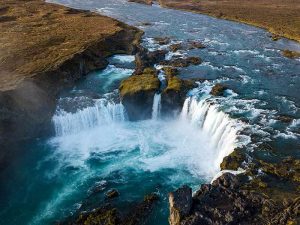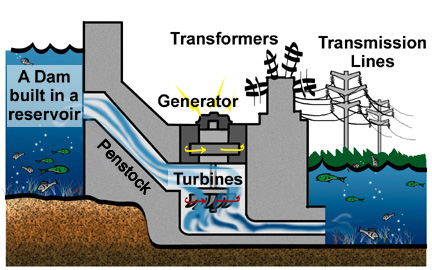Nowadays, everyone is reliant on the Internet for daily activities. From entertainment to socialization to business transactions. Almost all activities are now done online. Due to this, there is an increasing need for data centers.
Users who enjoy online services use cloud services provided by a data center. Every business and industry that uses online services also need a digital server. As more people rely on digital platforms, the data center industry is also expected to grow over the coming years. Industry analysts estimate the data center market to reach $59 billion by 2025. About a 35% increase each year is expected. Hence, the data center market is assured a remarkable development.
Water is a major resource in data centers. Since a large portion of their operations relies on water. In 2015, the total water usage in the USA was 1,218 billion liters per day. More than half of this is used in data centers. Today, we look at water usage in data centers. Focusing on its two main functions: data center cooling and electricity generation.
Water Usage in Data Centers
According to Mytton, “US data centers used 626 billion liters of water in 2014. It is expected to reach 660 billion liters in 2020.” In data centers, water is used directly for cooling. While indirectly for producing electricity. Think about a medium-sized data center. This infrastructure uses as much water as three average-sized hospitals. Or more than two 18-hole golf courses.
Data centers consume a vast amount of water. Because of this, there is much controversy on water consumption. In 2014, the US Government attempted to measure water usage in data centers. As you know, electricity generation consumes a large amount of water. The study found that 2% of all electricity is consumed by data centers. It only shows how much water is consumed in data centers.
Moreover, more water is needed to produce electricity to power data centers than cooling them. It takes about 7.6 liters of water on average to generate 1kWh of energy in the US. While an average data center uses 1.8 liters of water for every kWh it consumes. The result is US data centers consume billions of liters of water each year.
Water Usage for Data Center Cooling
ICT equipment in data centers produces a lot of heat. Drawing cool air into hot equipment transfers the heat energy into that air. Then the warm air is pushed out into the environment. This mechanism is common in data centers. Since ICT equipment temperature is typically higher than the surrounding air.

Photo Credit: www.vertiv.com
Mytton explained, “ICT equipment is located within a room or hall. Heat is ejected from the equipment via an exhaust. That air is then extracted, cooled, and recirculated.” Data centers are designed to function in temperatures ranging from 2 0°C to 22 °C. With a lower bound of 12 °C. When the temperature rises, failure rates of equipment also increase.
There are several data center cooling designs. Typically, chillers are used to decrease the air temperature. These chillers then use cooling water with temperatures ranging from 7°C to 10 °C. The cooling water is utilized as a heat transfer mechanism.
Other data centers use cooling towers. Here, the outside air moves across a wet medium so that water evaporates. While the fans remove the hot and wet air. The cooled water is then recirculated. Meanwhile, some data centers utilize an adiabatic cooler. This method sprays water directly into the airflow or a heat exchanger surface. It cools the air which enters the data center.
Both methods result in evaporation which causes water loss. According to Mytton, “A small 1 MW data center using one of these types of traditional cooling can use around 25.5 million liters of water per year. Cooling the water is the main source of energy consumption. Raising the chiller water temperature from the usual 7°C to 10 °C and 18°C to 20 °C can reduce expenses by 40%. Due to the reduced temperature difference between the water and the air.”
Water costs also depend on the location of a data center. Cooler areas mean less cooling is needed. Free air cooling will draw in cold air from the environment outside. Data centers in cooler areas may opt for smaller chillers. This will reduce the capital expenditure by up to 30%.
Water Usage and Energy Efficiency with Cloud Computing
Cloud computing refers to the delivery of on-demand computing services. From storage to applications to processing power. It is usually done through the Internet on a pay-as-you-go basis. Instead of companies having a data center, they may opt to rent access from a cloud service provider.
Cloud computing has many benefits. As stated by Ranger, “Firms can avoid the upfront cost. As well as the complexity of owning and maintaining their own IT infrastructure. Instead, they can just pay for what they use and when they use it. In turn, providers of cloud computing services benefit from significant economies of scale. Delivering the same services to a wide range of customers.”
Cloud computing is a major reason behind the flattening of energy consumption in data centers. Before, companies needed to build their own data center. They also had to buy equipment for their data center. But with cloud computing, there is no need for such expenditures. Companies may just rent cloud vendors for their business.
A downside of cloud computing, however, is that users cannot see their resource consumption behind every purchase. Hence, one does not know yet the environmental effects of cloud computing.
Water Usage for Electricity Generation

Photo Credit: deee.weebly.com
Water usage is measured based on consumption or withdrawal. Consumption means water is lost through evaporation. While withdrawal means that water is taken from a source and later returned to the source. A water source can be underground water, natural surface water, or potable water.
The electricity needed for data centers needs a vast amount of water. Power plants burn fossil fuels such as coal and gas to heat water. It produces a stream that rotates the turbines which generate electricity. Power plants may also use nuclear fission to produce electricity.
According to Mytton, “Water is a key part of this process. It involves pre-treating the source water to remove corroding contaminants. As well as post-treatment to remove brines.” When the turbines are running, water is lost due to evaporation. Then expelled as an outflow or it can be recirculated.
In 2015, the average water consumption for producing electricity in the US was 2.18 liters per kilowatt-hour (L/kWh.) However, fuel and generator technology have a significant impact on cooling water needs. Renewable sources of energy can be considered in generating electricity.
Hydropower or hydroelectricity is a type of renewable energy. Although it also utilizes a significant amount of water. The evaporation of water from open reservoirs causes water loss in dry areas. As well as those areas where water is not transported back to the reservoirs. The average water consumption for hydropower is 16.8 L/kWh. Relative to 1.25 L/kWh in thermoelectricity.
Other types of renewable energy are solar energy and wind energy. Both types do not need water to produce electricity. However, they still consume water in construction and manufacturing processes. In 2030, it is expected that wind energy and solar energy will reduce water withdrawals in many countries.
The energy consumption in data centers has grown 6% from 2010 to 2018. This is despite the massive increase in network traffic, compute instances and storage capacity over the years. Utilizing cloud computing has helped this small increase.
Mytton explained, “53% of servers are expected to be in hyperscale facilities by 2021. Cloud vendors are some of the largest purchasers of renewable electricity. If the electricity is generated from wind and solar then the water footprint is significantly reduced.”
Monitoring Water Usage with AKCP
Water is life. It is a vital source in data centers. Monitoring your water usage is essential in keeping smooth operations. It is also essential in helping our natural environment. For your water usage monitoring needs, visit our website at akcp.com. AKCP offers a wide range of wired and wireless sensors for data centers. We offer environmental, security, and power monitoring sensors. As we all have specialized sensors and power supplies. Visit akcp.com and we will help you with professional monitoring systems.
Conclusion
Water is a vital natural resource for everyone. It plays a key role in data center cooling. As well as electricity generation for powering data center operations. The industry is keen on looking for strategies to lessen energy consumption.
One of the strategies that help greatly in energy efficiency is cloud computing. With cloud computing, companies may opt to rent cloud service providers for their operations. It helps in decreasing data center energy and water usage.
Another strategy is utilizing more renewable energy. Solar energy and wind energy consume less water. The industry should also focus on employing these natural resources for data centers.
Reference Links:
https://www.vxchnge.com/blog/next-generation-data-center-trends
https://www.businesswire.com/news/home/20200525005100/en/Global-Data-Center-Colocation-Market-2020-to-2025—Growth-Trends-and-Forecast—ResearchAndMarkets.com
https://davidmytton.blog/how-much-water-do-data-centers-use/
https://www.nature.com/articles/s41545-021-00101-w
https://www.akcp.com/blog/data-center-water-usage-effectiveness-wue/
https://www.zdnet.com/article/what-is-cloud-computing-everything-you-need-to-know-about-the-cloud/




